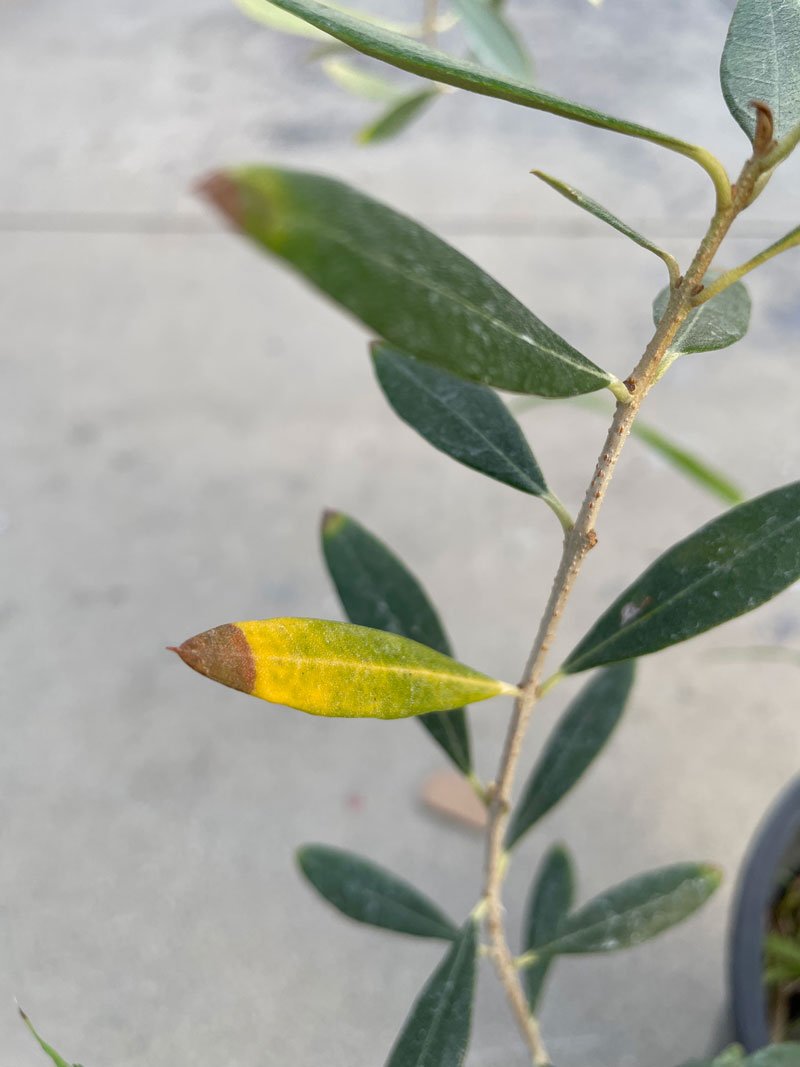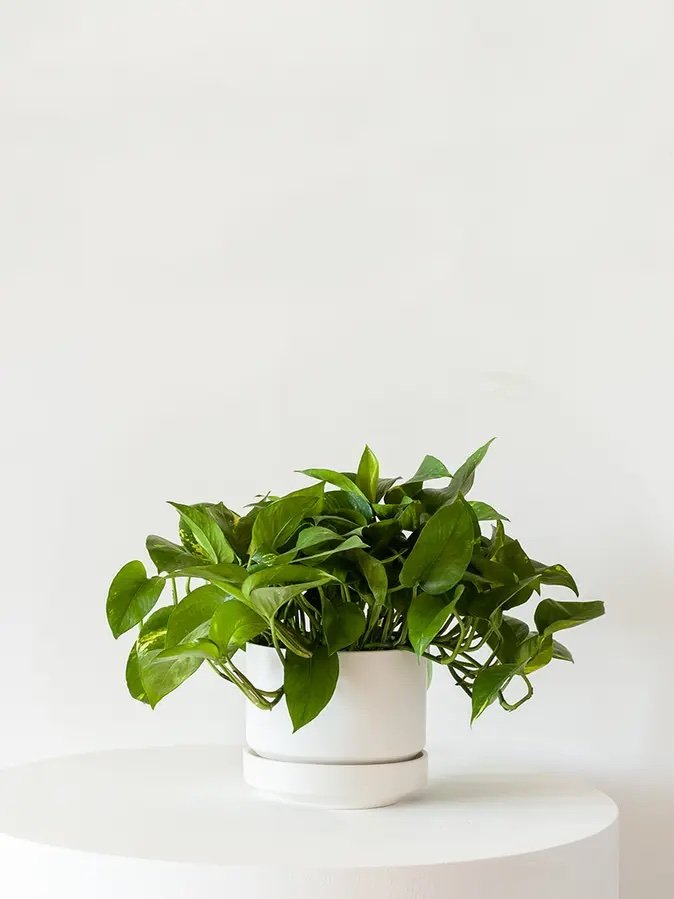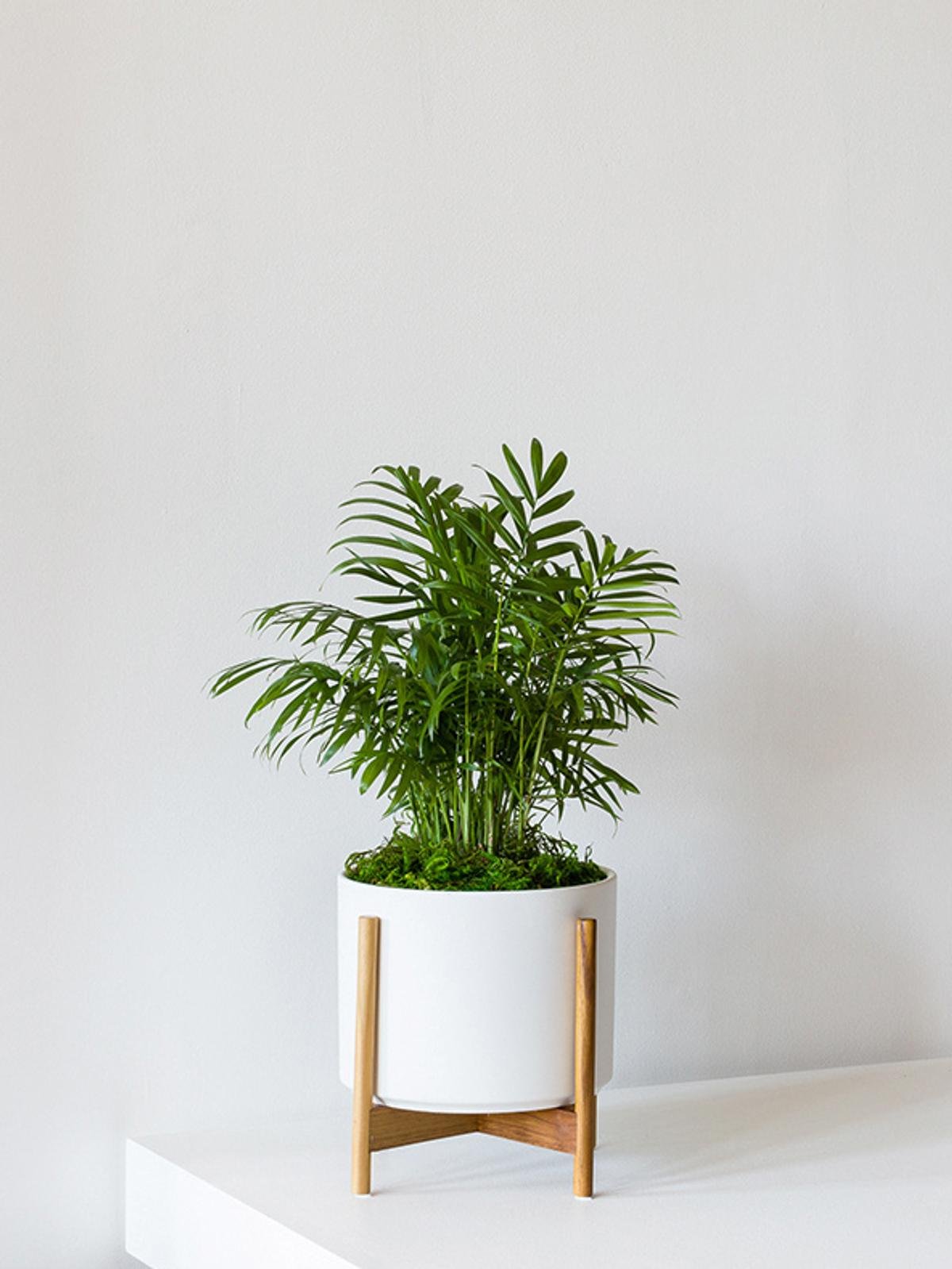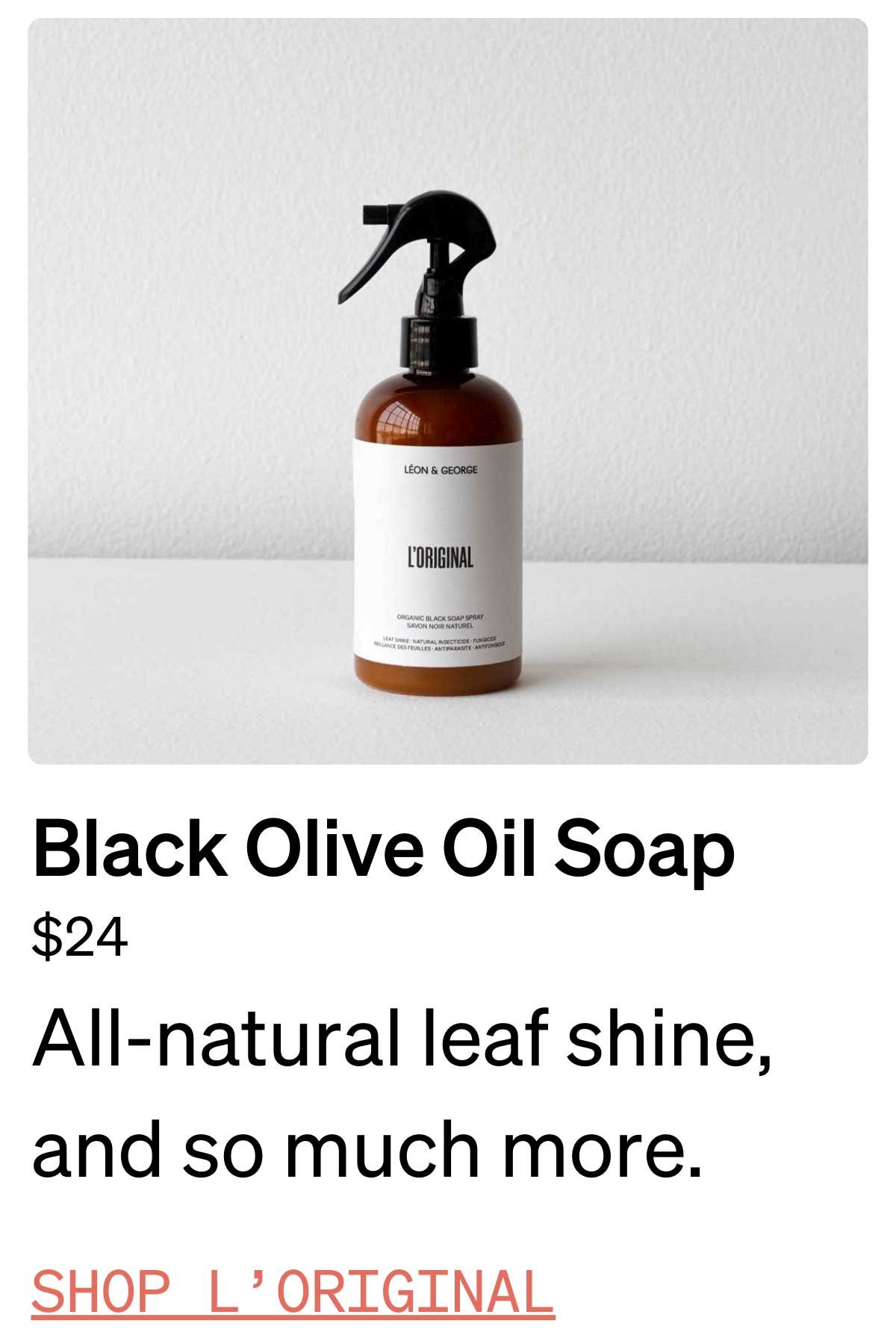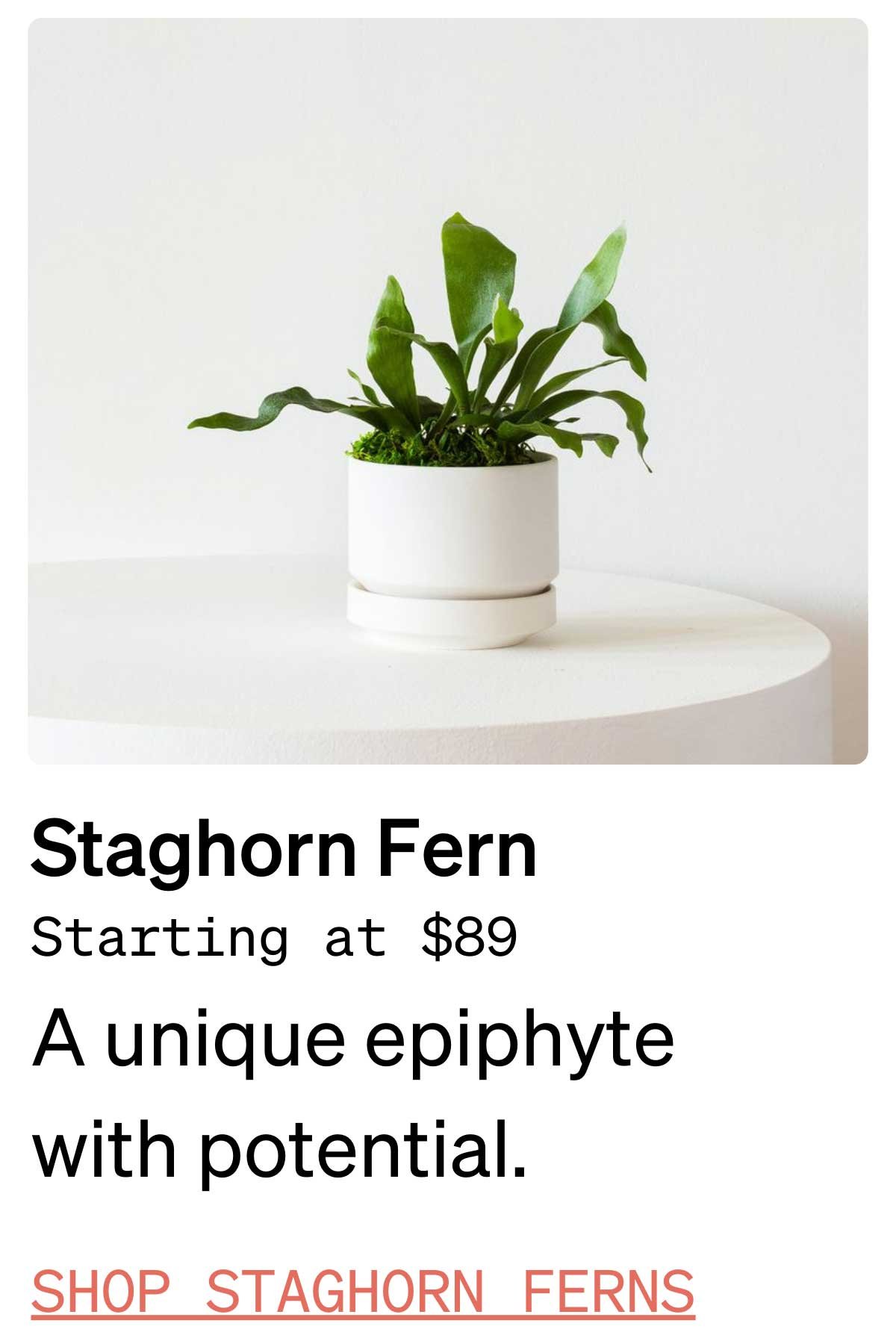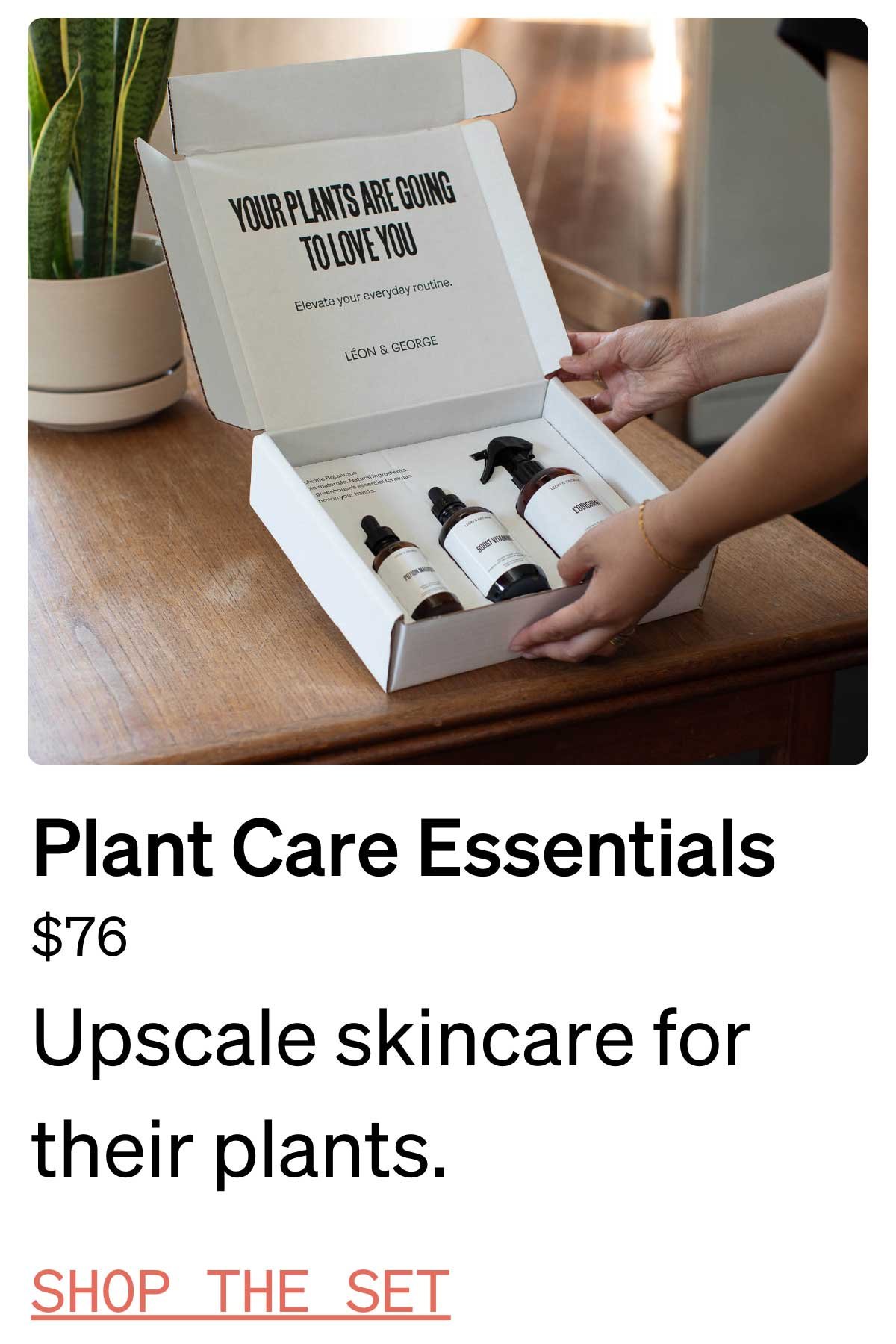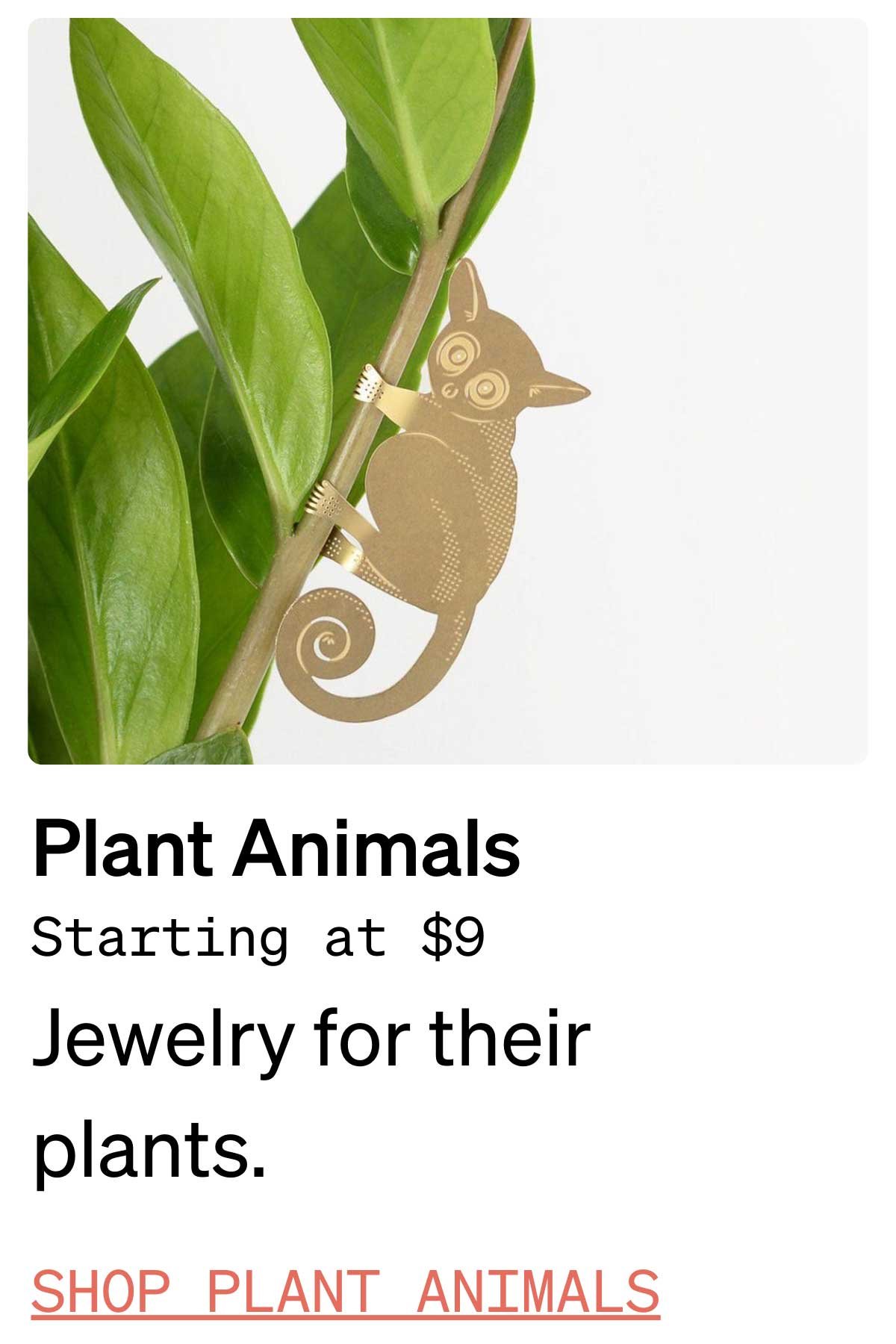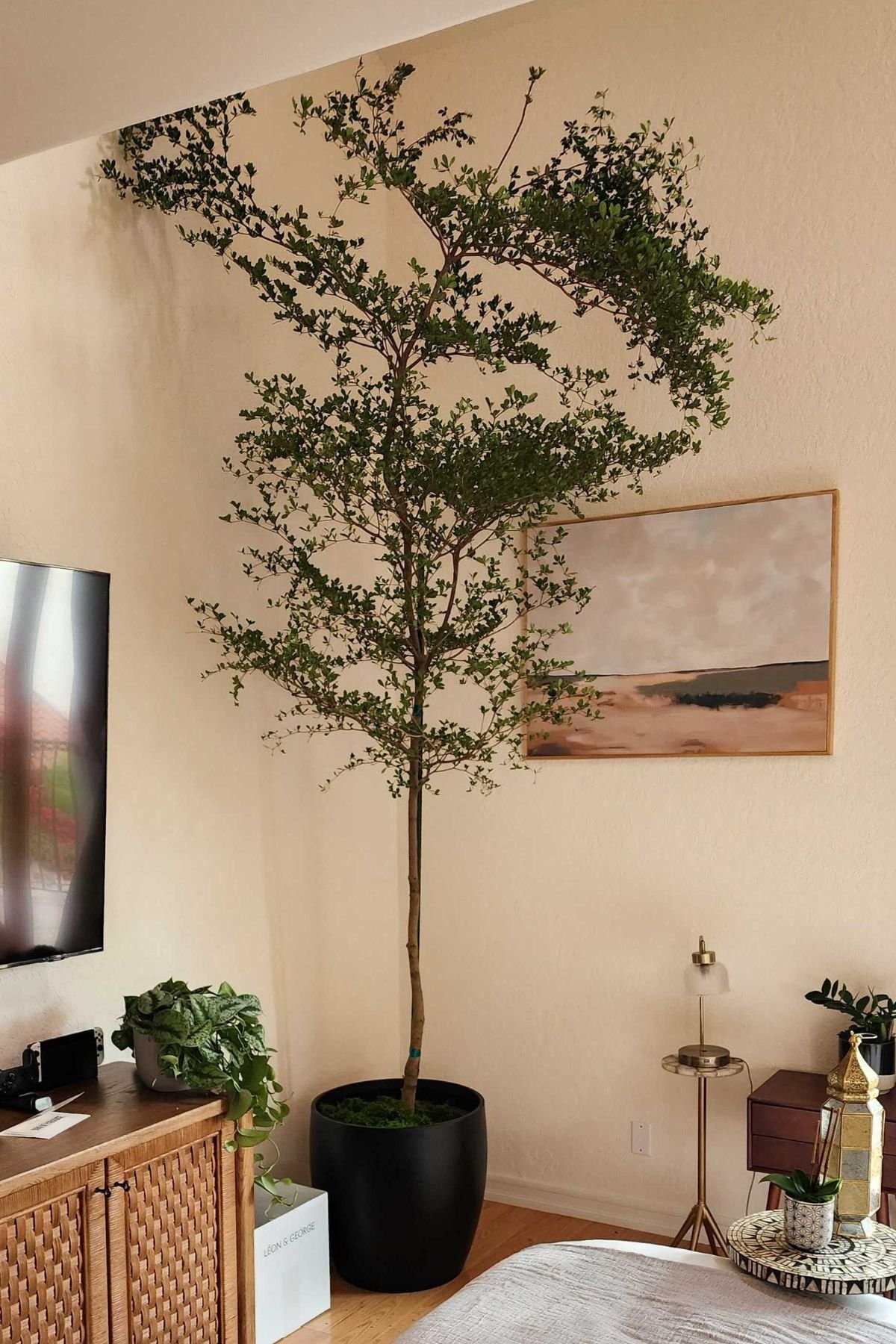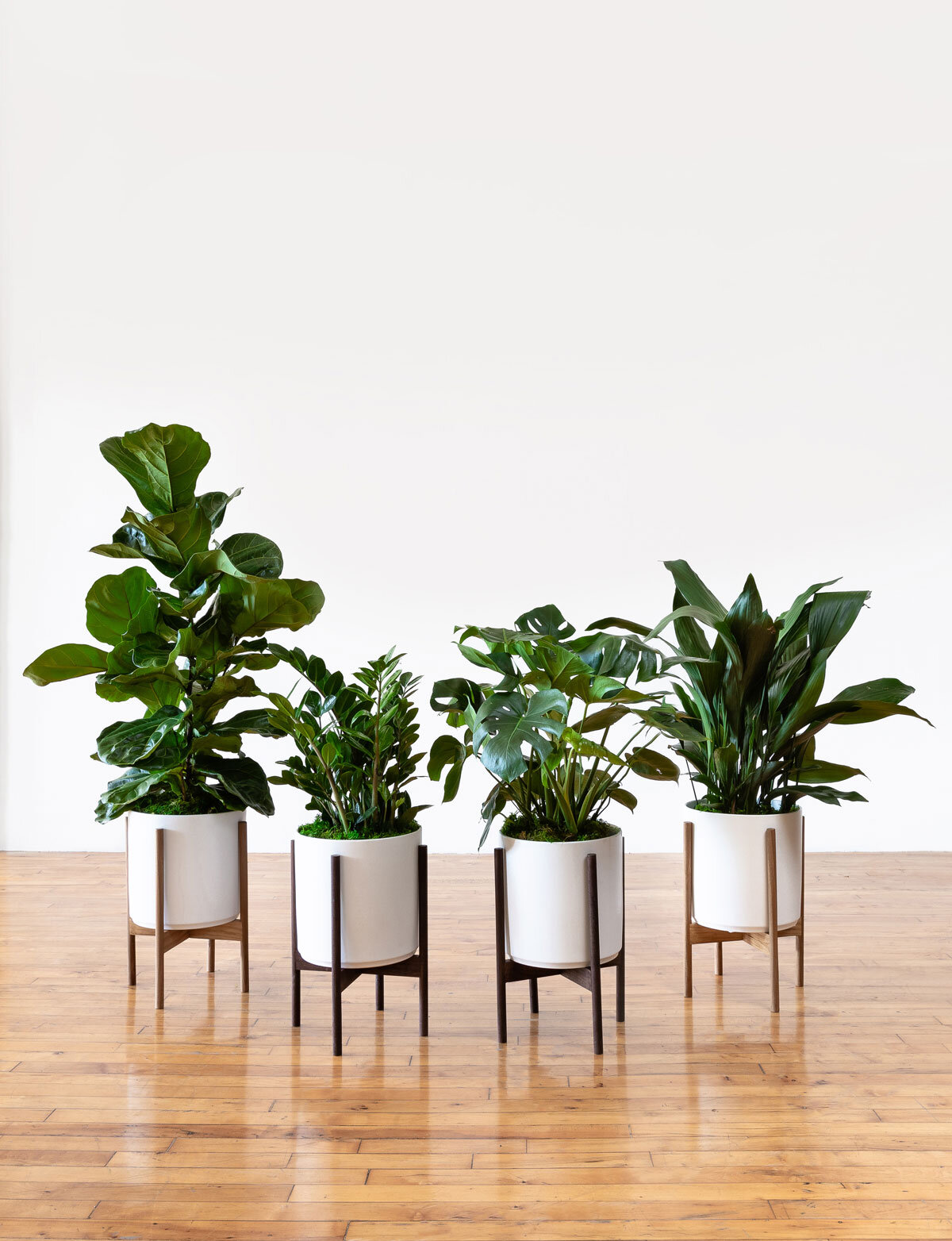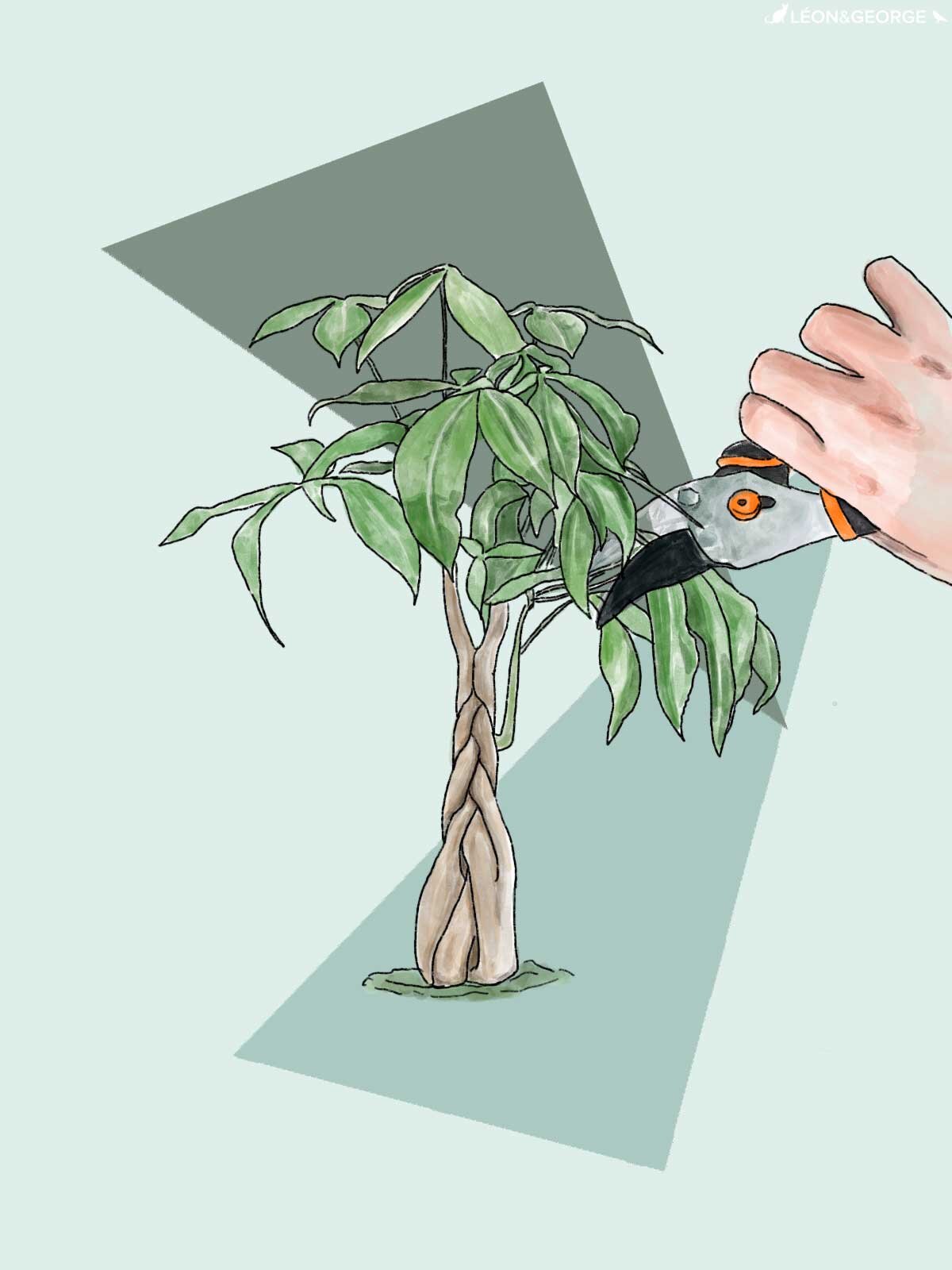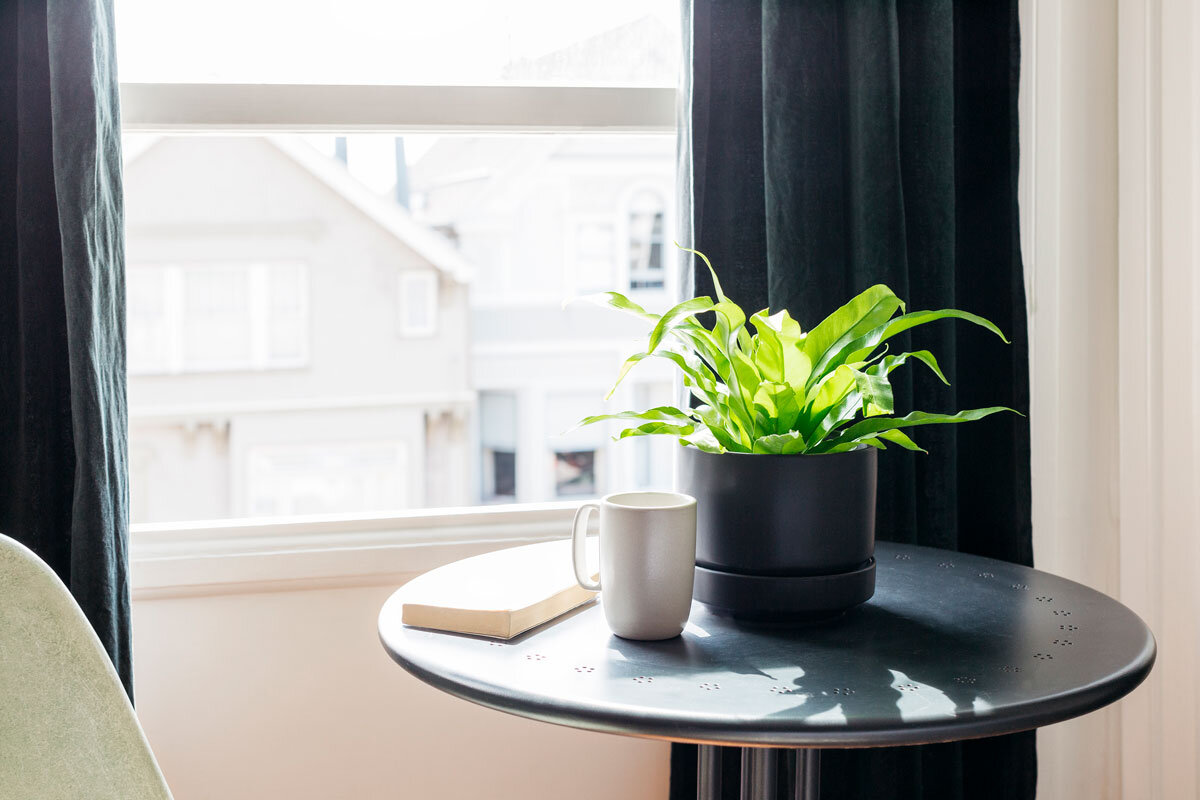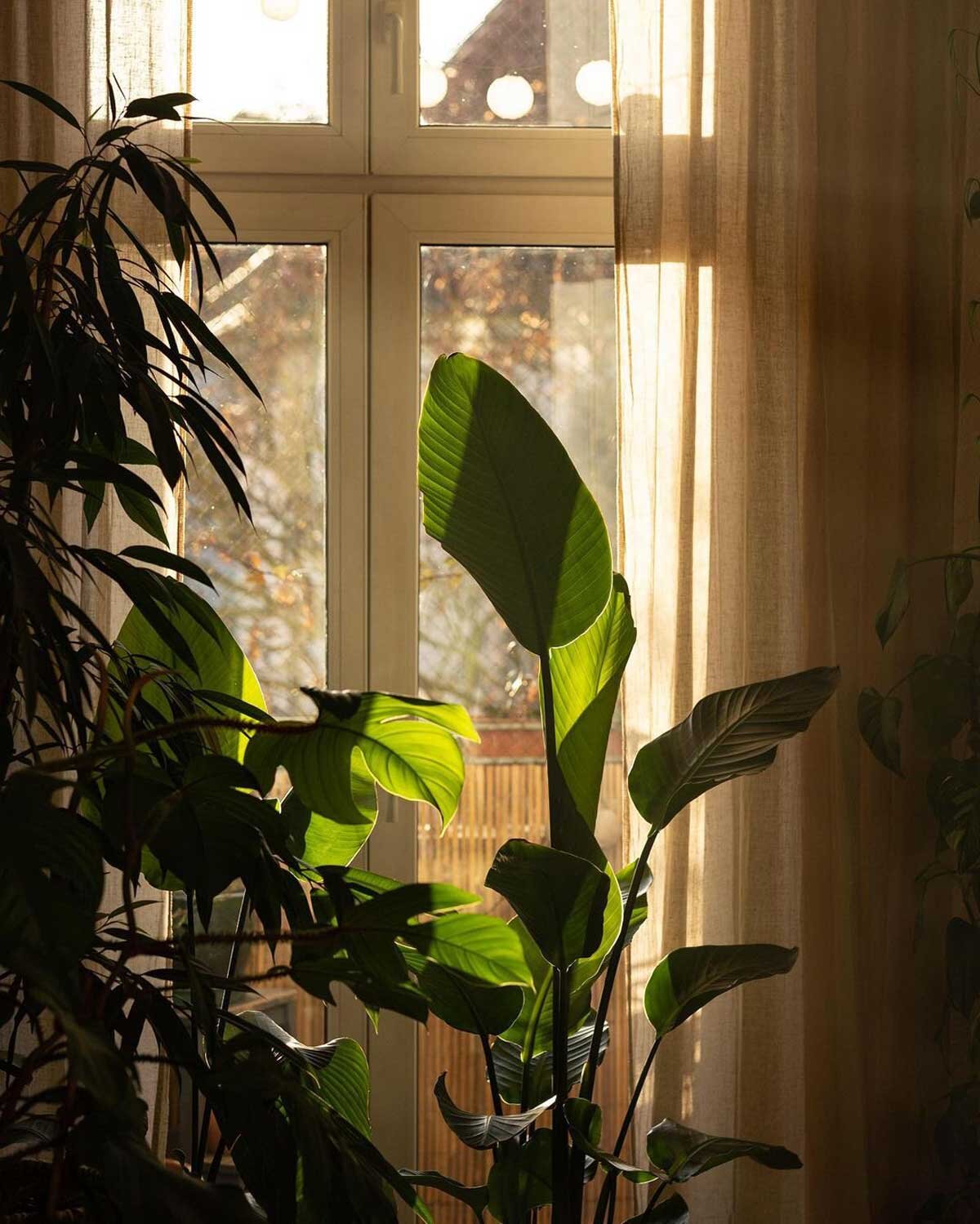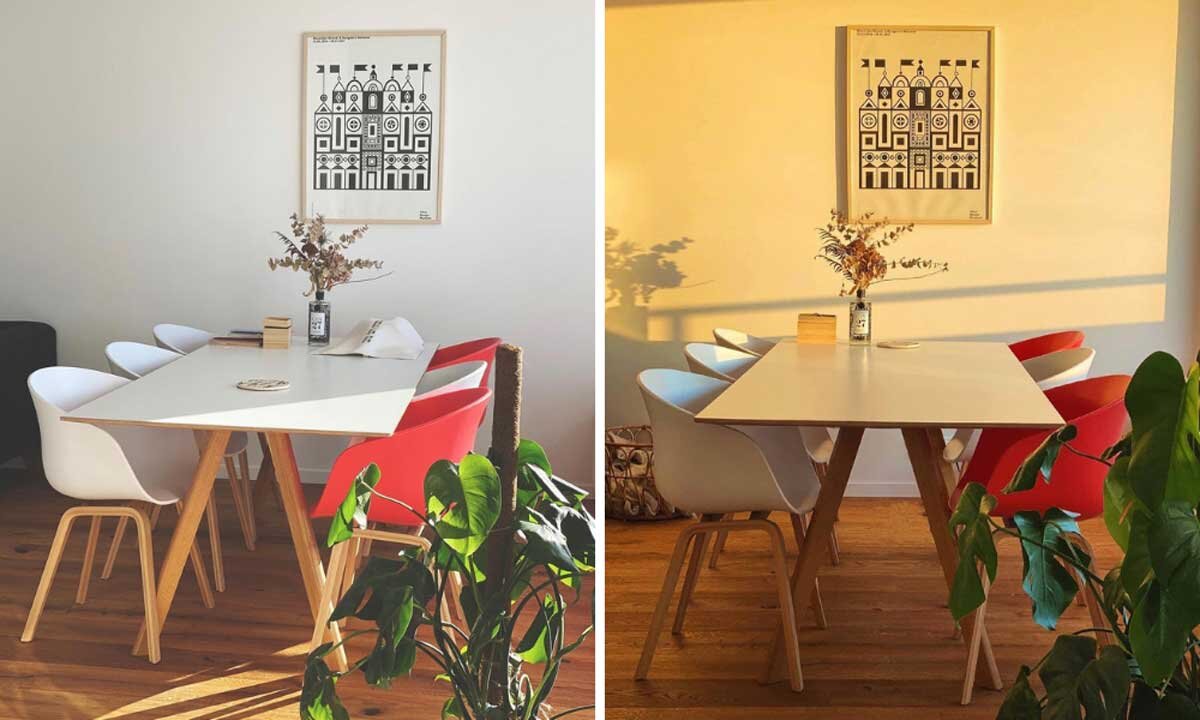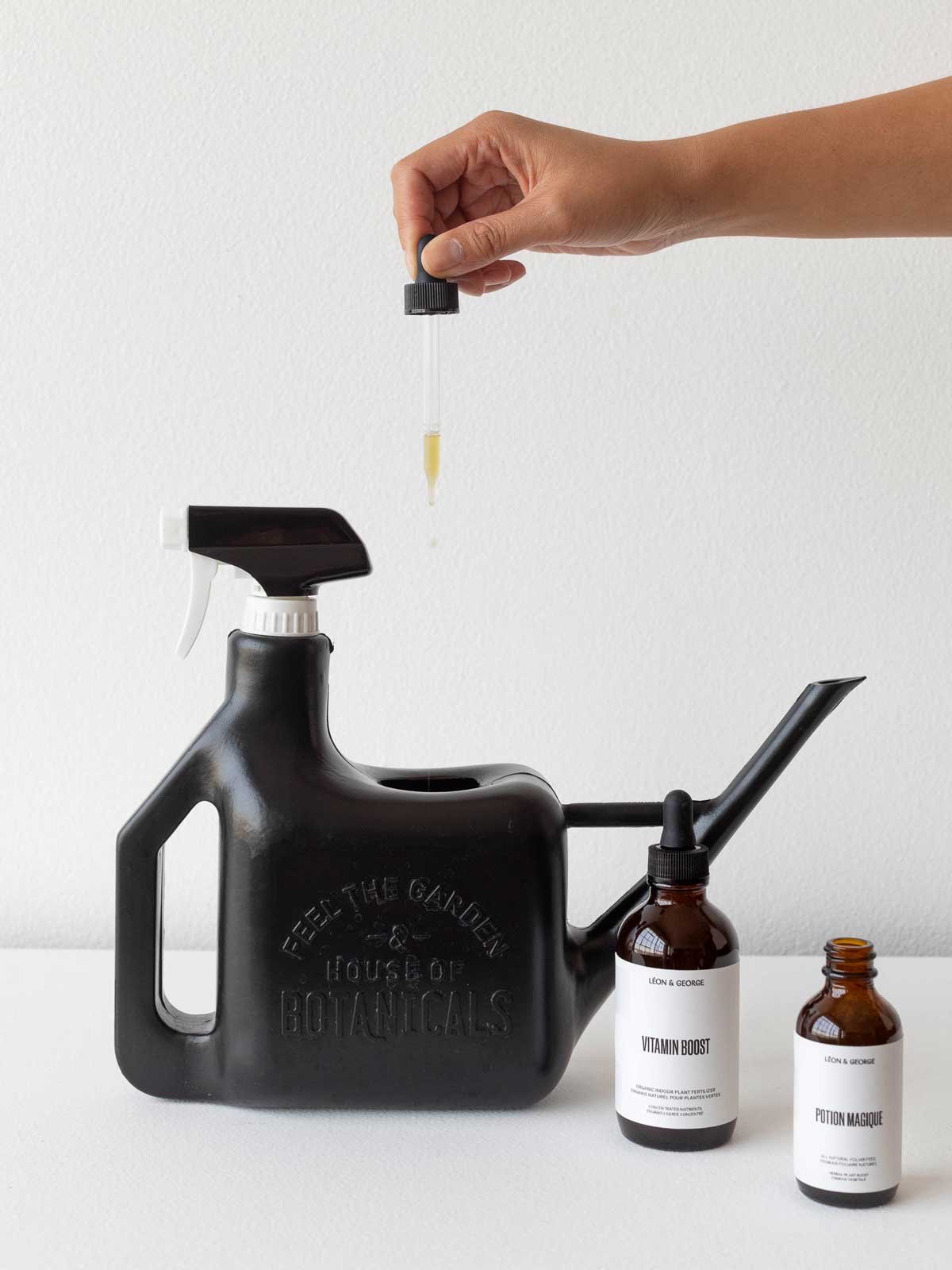Yellow leaves on your Olive Tree? Find out what could be causing them.
The Olive Tree varieties are without a doubt having a moment amongst other tropical potted houseplants and outdoor plants, with their effortlessly ornamental branches and Mediterranean vibe that may even bloom ripe edible olives. However, while Olive Trees can be incredibly low maintenance (they are highly drought-resistant, after all!) they can take some patience for new plant owners, especially when planted indoors. Seeing the emergence of yellow leaves on your Olive Tree can be disconcerting, and in this comprehensive guide, we’ll delve into the reasons and symptoms behind yellowing leaves and provide practical solutions to ensure the vibrancy of the foliage and help your Olive Tree thrive while increasing your green thumb and horticulture expertise.
Yellow Curling Leaves
Olive Trees, though hardy, can suffer from nutritional deficiencies, particularly in nitrogen. Signs such as yellow-tinged leaves, curling leaves and stunted growth indicate this issue. What causes this can be a nitrogen or magnesium deficiency. Using fertilizer regularly can assist in alleviating the issue, and if you’ve had your Olive Tree for a long period of time, you may consider repotting to replenish nutrients within the soil.
Leaves Turning Yellow and Falling Off
If your Olive Tree is shedding pale yellow leaves at a somewhat alarming rate, the most likely culprit is a lack of sunlight. Olive Trees typically don’t tolerate low light, and need at least 6 hours of direct sunlight per day, and are best-suited for outdoor areas. If you’d like to keep your Olive Tree indoors, make sure to place it in a bright, unobstructed window with no shade, ideally south-facing, and possibly even consider supplementing with an artificial grow light.
Leaves Turning Yellow and Drooping
The delicate dance of watering significantly influences Olive Tree health. If you see leaves that are yellow with discoloration, limp or drooping, begin to wilt, or are dropping overwatering is a common cause. Remember that Olive Trees are native to hot, arid climates and are very drought-resistant. Heavily overwatering any plant can lead to root rot, and if you suspect you’ve overwatered your Olive Tree, check the soil and roots to see if it will need repotting.
Yellow Leaves with Dry Brown Edges
Both insufficient and excessive water can make your Olive Tree susceptible to yellow leaves, cause them to begin wilting, or lead to brown spots. While Olive Trees are known for their drought tolerance, they still need regular watering. Prolonged periods of drought will result in yellow leaves with dry brown plant leaves and edges. While you won’t be able to bring these leaves back to their former state, giving your plant a good, healthy drink of water should prevent more leaves from drying and turning yellow and brown.
Normal Seasonal Drop: Nature's Course
Despite being classified as evergreens, Olive Trees can undergo a natural leaf-shedding process. Some yellowing leaves in spring for example are part of this seasonal cycle and are generally not a cause for alarm. Understanding this normal drop can ease concerns associated with the occasional yellow leaf and may need pruning, similar to other plants to encourage plant growth. Olive trees, typically tropical plants, may go dormant in the winter, even when kept as indoor potted plants. Despite being tolerant of full sun conditions and thriving in humid climates, their natural response to seasonal changes may involve a period of dormancy during colder months.
Avoiding Yellow Leaves on Olive Trees
Prevention is the best cure for any plant woe, but the good news is that many cases of yellow tree leaves and stems are easily fixable! Here are a few preventative measures as well as cures for yellow leaves on Olive Trees:
Find the Perfect Watering Balance
To avoid the yellowing blues, make sure you're not drowning, providing too little water, or soaking your Olive Tree. Ensure you are using a well draining, less compacted potting soil or potting mix and let the top two inches of soil dry out before giving it a good drink. Established outdoor trees are pretty low-maintenance in the watering department, but those young indoor ones may need to be watered more frequently, especially in hot and dry months. As always, ensure there is proper drainage included with the pot. This will ensure your Olive Tree does not remain damp and can be drained through the roots before placing it into your decorative planter.
Additionally, misting the foliage with a watering can mister creates a mini oasis for your Olive Tree, boosting the natural humidity around the plant. This pampering session helps keep those lush green leaves happy and thriving and combats dry indoor air. Adding a layer of moss or pebbles to the top of the soil not only enhances the aesthetic appeal but also serves as an effective natural mulch, helping to retain moisture in the soil and adding to organic matter for healthy soil.
Try this - The bottom watering method
In the pursuit of fostering optimal growth and combatting yellow foliage, the bottom watering method emerges as a horticultural game-changer and prevents your Olive Tree from taking in too much water. By employing this technique, you can maintain a delicate balance in the soil moisture crucial for your olive tree's well-being and prevent your tree from becoming rotted. This method allows your Olive Tree to self-water itself, ensuring that the root system receives hydration without the risk of drowning or waterlogging. This method not only promotes the longevity of your greenery but also simplifies the maintenance process, making it an excellent choice for a harmonious and hassle-free approach to watering your Olive Tree.
PROVIDE AT LEAST 6 HOURS A DAY OF DIRECT LIGHT
Light-intensity is important for your Olive Tree, as it is a light-lover through and through and enjoys at least 6 hours of bright light or full direct sunlight a day. If you aren’t sure what constitutes direct sunlight, think unobstructed exposure to the sun. Sunlight not only helps your tree become a quicker grower, but also helps keep those leaves nice and dry, preventing any unwanted mildew and fungus.
NUTRIENT BOOST
Olive trees are not too picky about about nutrient deficiency in their soil, but feeding your tree a nutrient-rich fertilizer or plant food during the active growing season will help keep yellow leaves at bay, increase your gardening expertise, balance the soil ph, and encourage new growth. Be careful not to over fertilize and refrain from fertilizing during dormancy, though, by following the correct dosage during active growing months— fertilizer burn can cause even worse damage on the foliage of your plant.
PESTS
Pests pose a significant threat to the vitality of an olive tree, often causing distressing consequences for its foliage. Various pests, including bugs like aphids, spider mites, and mealybugs, can infiltrate the leaves, compromising the overall health of the tree. Neglect in houseplant care can increase the issue, creating an environment conducive to infestations in their pots. Fungus gnats, attracted to moist soils, can further worsen the situation. To combat these unwanted guests, incorporating neem oil mixes into your plant care routine can be an effective solution. Neem oil acts as a natural repellent against pests, offering a sustainable and eco-friendly approach to safeguarding your olive tree from the potential harm caused by these pesky invaders. Prioritizing vigilant pest management is essential for ensuring the enduring beauty and health of your olive tree's foliage.
Olive Tree Collection
Premium Olive Trees, potted and delivered, plus lifetime access to 24/7 Plant Doctor support. Order online at leonandgeorge.com
